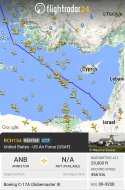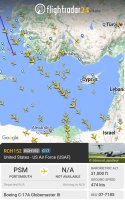It was the first version, the JY-27. China apparently
two radars. It appears to have a range of
than 400 km.
.
.
That's why I find these useless, meaningless comparisons invalid. Here's another example:
Diagram by the respected Carlo Kopp of the Air Power Australia website;
 View attachment 137317
View attachment 137317
According to him, an F-35 is capable of approaching an S-300/400 site to the point of launching its SDBs (40 miles), but as soon as it evades and turns back to the anti-aircraft system, it becomes visible to microwave radars and can be engaged by missiles (Mach 5) that will shoot it down at some point between 85 and 154 seconds after it opens the bomb bay (at which point it starts to be tracked) and launches its 8 SDBs.
This would be completely correct if:
1- the Americans and all users do not know this;
2- if the F-35's rear RCS is actually comparable to a conventional fighter, which would be absurd;
3- if the SDBs only have a 40-mile range when fired from the F-35;
4- if the fighter turns back to the SAM system;
5- if there is no other F-35 interfering with its AESA on the S-300/400 radar system until the bombs arrive (it takes about 4 to 5 minutes for the bombs to travel those 40 miles);
6- if we do not take into account that there are other weapons that can be used against SAMs and not only SDBs, for example, the British are developing the Spear, with a 100-mile range;
7- if the F-35 does not use electronic countermeasures to defend itself against the missiles, for example, by launching “chaffs” or ejecting more sophisticated “decoys”;
8- if the F-35 does not have supercruise capability; 9- if the most suitable fighter to penetrate this type of SAM site is not the F-22; 10- if the American forces are naive enough not to use other support aircraft in an attack of this magnitude.
If we imagine that an IADS composed of S-300/400 will be attacked by about 8 F-35s, 6 of which are responsible for bombing (at least 48 SDBs) and two for electronic jamming.
Some time ago, there was much talk that Soviet fighters were able to escape detection by the F-15's radars using the “cobra” maneuver and disappearing from the radar by implementing a trajectory perpendicular to the radar beam. So, if it was possible for the Soviet fighters to do this, it is quite possible for the F-35, after dropping its bombs, not to turn its most vulnerable part towards the enemy, but to remain on a perpendicular trajectory, exposing its side, which is much stealthier than its vulnerable rear.
However, reality is very different from these unrealistic simulations and analyses. It is unlikely that the use of stealth aircraft against a Russian or Chinese IADS would be a walk in the park, although the attacker always has the advantage and that anti-aircraft defense systems are systems that are on the defensive, under attack, and are at a disadvantage simply because they do not have the initiative to take action. Stealth allows the attacking aircraft to take the initiative and the anti-aircraft system to remain on the defensive, which in itself is a disadvantage. There would be losses of F-35s if they were to scramble them to attack a dense site of S-300/400s. However, stealth allows the system to be penetrated, which would otherwise be very costly.
If an F-18 were to do the job, it would have to use massive ECM, long-range weapons (HARM/AARGM missiles) and decoy missiles and would have to face much more certainty of air opposition.
On the Russian side, there is a high chance that they will use their C-PGM (Pantsir) systems to intercept many of the bombs dropped, which would require a saturation attack.
There is a future possibility of an increase from 8 to 12 SDBs dropped by the F-35A and C, which would mean that an attack by 8 fighters could drop almost 100 high-precision and autonomous bombs.
The Russians wisely implemented mobility in their radars and SAM systems, but somewhat belatedly, since today reconnaissance is mostly done in real time and the use of datalink and data fusion is widespread.
A few years ago, anti-aircraft defense sites were discovered via photo or electronic reconnaissance satellites or by reconnaissance aircraft, which required more planning time, but today, this can be done in real time and even by fighters and bombers themselves.
Using the capabilities of synthetic aperture radars (SAR), moving target indicator (MTI) and automatic target recognition (ATR) capabilities, as well as ELINT systems, a fighter or bomber can, on its own, discover its targets and carry out the attack in real time.
The F-35's SAR mode can identify targets and extract their geographic coordinates, and SDB bombs can be fueled with these coordinates and dropped. Today, the ability to move quickly is no longer a guarantee of survival, this is even worse with the use of hypersonic missiles that can disable a SAM site in an extremely short time.



